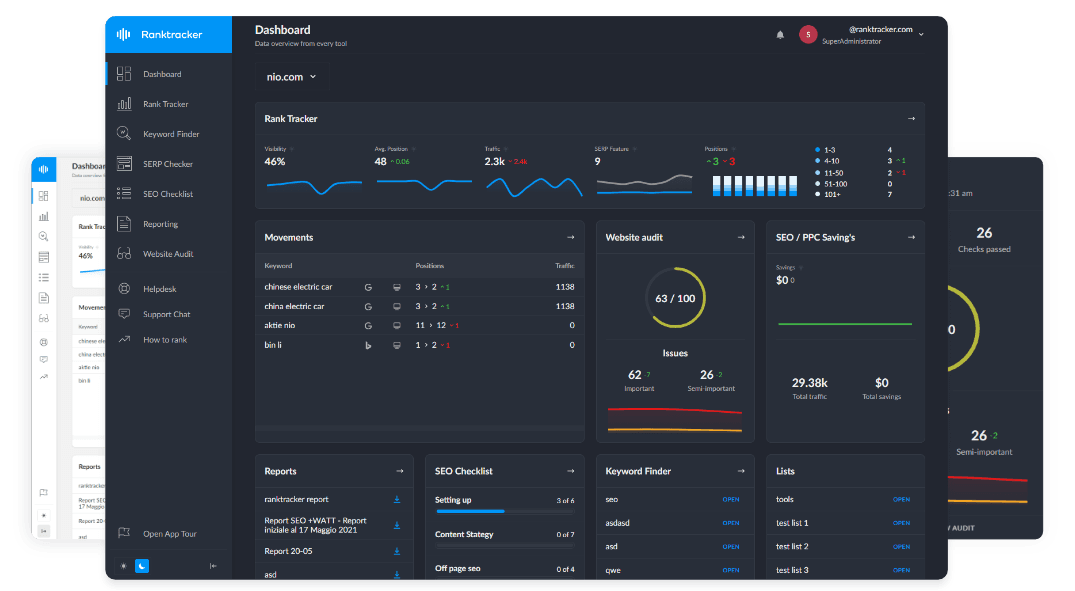Intro
The world of link building is evolving fast. In 2025, Google’s algorithms are smarter, manual penalties are stricter, and AI has both improved and complicated outreach. To succeed, SEOs and marketers must focus on relevance, transparency, and measurable ROI.
Here are the top link building trends shaping successful SEO strategies in 2025.
1. Quality > Quantity (More Than Ever)
In 2025, one high-quality link can outperform dozens of spammy ones. Google has become increasingly adept at detecting manipulative links. SEOs are shifting to:
-
Fewer but stronger placements
-
Real websites with traffic and editorial standards
-
Links with contextual relevance over raw DR
2. Topical Authority Beats General DR
A DR 70 link from an unrelated domain won’t move the needle like a DR 40 site that’s deeply topical. Google now favors links that reinforce your site’s niche authority.
Use tools like Ranktracker’s Backlink Checker to analyze topical alignment and refine your link targets.
3. AI-Assisted Outreach—But Human QA
AI is making outreach faster with personalized templates, subject line testing, and scalable prospecting. But agencies that rely solely on AI-generated content or communication are seeing lower placement rates.
Winning teams use AI for scale, then manually refine every message and article before outreach.
4. Real Traffic Metrics Are Non-Negotiable
Marketers are prioritizing real user metrics over vanity DR. In 2025, link value is measured by:
-
Organic traffic
-
Bounce rate and dwell time
-
Real audience relevance
-
Historical consistency (not flash-in-the-pan sites)
5. Link Insertion Requests Are More Regulated
Site owners are increasingly protective of their content. Niche edits (link insertions) still work but must be:
-
Highly relevant
-
Added naturally to existing content
-
Accompanied by quality improvements to the host post
Low-effort insertion requests are getting ignored or removed quickly.
6. SaaS and Affiliate Sites Are Driving the Market
Link building demand is highest in:
-
SaaS (especially AI, fintech, and marketing tools)
-
Affiliate marketing (particularly in evergreen niches)
-
eCommerce brands with content strategies
Agencies are adapting packages specifically for these business models, focusing on commercial-page placements.
7. White Hat Is the Only Scalable Strategy
With Google cracking down harder in 2025, scalable, long-term link building must follow white-hat strategies:
-
Manual outreach
-
Guest posting on editorial sites
-
Creating link-worthy assets
-
Leveraging brand mentions and digital PR
Anything that even hints of automation, AI-spam, or black-hat networks is getting penalized faster.
8. Real-Time Monitoring Is Critical
Backlink monitoring tools are no longer optional. SEOs need to know:
-
When a link drops or is removed
-
If a site is deindexed or flagged as spam
-
How a new link impacts rankings
Ranktracker’s Backlink Monitor and Keyword Tracker provide real-time visibility so you can act before issues compound.
9. Link Placement Speed Is a Competitive Advantage
Turnaround times matter. Agencies offering 1–2 week delivery windows are outperforming slow-moving providers.
Faster placement doesn’t mean lower quality—as long as outreach and editorial approvals are still handled with care.
10. Ranktracker as a Central Link Building Hub
In 2025, SEOs are consolidating tools. Ranktracker remains a top choice because it combines:
-
Prospecting (Backlink Checker)
-
Monitoring (Backlink Monitor)
-
Keyword impact tracking
-
Full SEO analysis and reporting
This means you can build, measure, and optimize your link building strategy without juggling multiple platforms.
Stay Ahead by Adapting Fast
The link building landscape is cleaner, smarter, and more competitive in 2025. To succeed, marketers must lean into:
-
Relevance over raw metrics
-
Quality content and editorial standards
-
Ethical, transparent outreach
And with Ranktracker by your side, you’ll have the data, tools, and speed to stay ahead of every trend.

